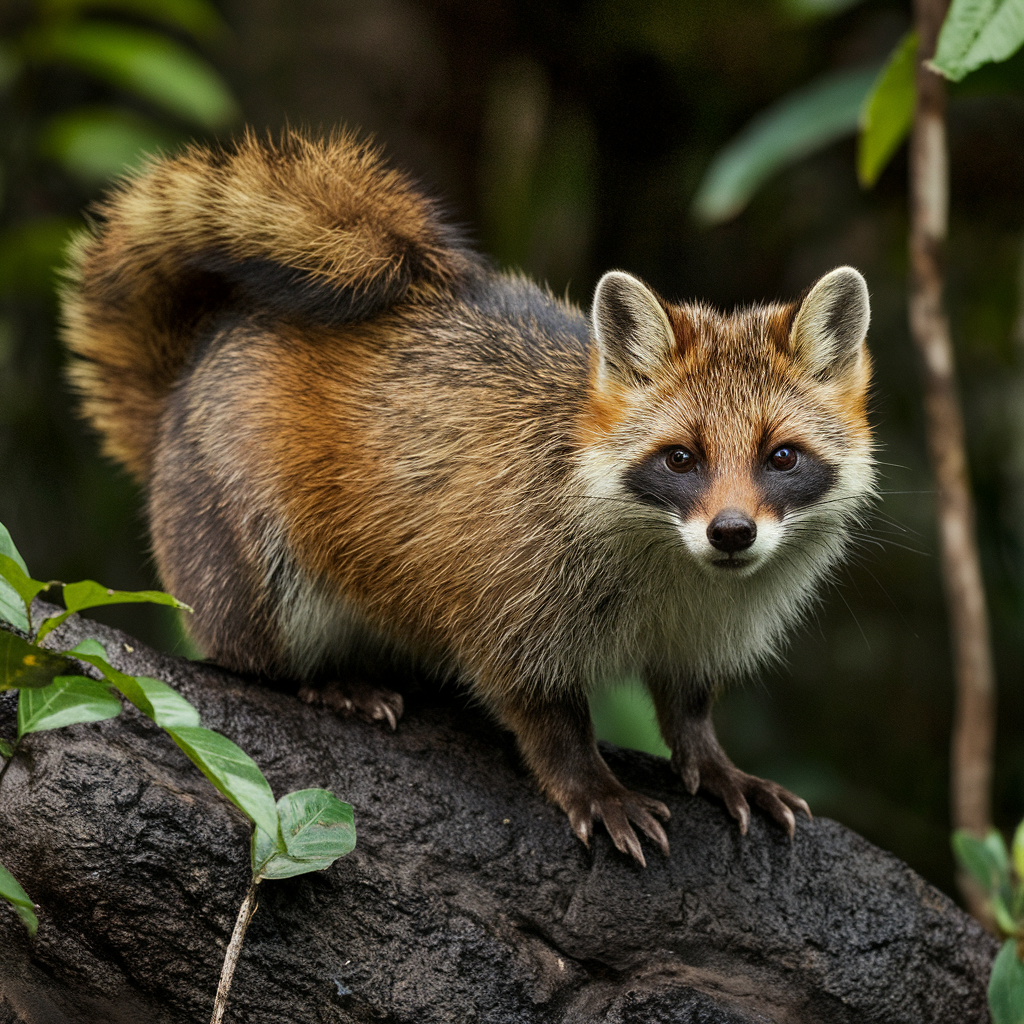Tñacuache: Exploring Its Cultural and Ecological Importance

The tñacuache, a creature deeply woven into Mexican folklore, is both a symbol of cultural heritage and a fascinating animal with significant ecological value. Known as the opossum or “tlacuache” in other Spanish-speaking regions, this marsupial species has become an iconic figure in various indigenous myths and folk tales across Latin America. Beyond its cultural presence, the tñacuache plays a critical role in maintaining ecological balance within its habitat. Here, we’ll explore everything from its biological characteristics and behaviors to its role in cultural narratives and ecological impact.
Understanding the Unique Characteristics of the Tñacuache
The tñacuache is a member of the Didelphidae family, commonly known as opossums, and is one of the few marsupials native to the Americas. This animal has adapted to a variety of environments, making it a resilient and adaptable species. Found primarily in Mexico and Central America, the tñacuache’s ability to thrive in different habitats is due to both its diet and physical attributes.
Physical Traits and Adaptations
Known for its distinctive appearance, the tñacuache has a long, prehensile tail that helps it navigate trees and other environments. This tail, which can grasp and hold objects, is especially beneficial for balance and climbing. Its sharp claws and opposable thumbs further enhance its agility, allowing it to thrive in forested areas and urban landscapes alike. Covered in a coat of thick, gray fur, the tñacuache is well-camouflaged in its natural habitat, aiding in its survival against predators.
Unique Behavioral Traits
Among its most intriguing behaviors is the tñacuache’s ability to “play dead” when threatened. This unique defense mechanism, known as “thanatosis,” enables the animal to feign death by falling over, drooling, and even emitting a foul odor to discourage potential predators. This instinctual act is one of the reasons the tñacuache has been able to survive in environments populated by various natural threats.
The Tñacuache’s Role in Mexican Folklore
The tñacuache is not only significant in ecological terms but also holds a special place in Mexican culture and mythology. Indigenous communities have long shared stories that feature the tñacuache as a clever, resourceful figure, often regarded as a symbol of wisdom and resilience. Some legends even suggest that the tñacuache played a role in gifting fire to humanity, showcasing its importance in mythological narratives.
Symbolism in Indigenous Mythology
In ancient tales, the tñacuache is often depicted as a trickster figure, embodying both wisdom and cunning. According to one popular story from the Nahua people, the tñacuache is said to have stolen fire from the gods to give to humans, bringing warmth and light to communities. This tale has been passed down through generations and remains a well-loved narrative that highlights the tñacuache’s perceived intelligence and bravery.
The Tñacuache in Modern Mexican Culture
The enduring presence of the tñacuache in Mexican folklore is evident in modern culture, where it is sometimes portrayed in popular media and literature. The animal’s role as a cultural symbol extends beyond indigenous stories, capturing the imagination of people across Mexico. This lasting cultural connection demonstrates how deeply rooted the tñacuache is within the cultural fabric of the region.
The Ecological Importance of the Tñacuache
Beyond its cultural significance, the tñacuache serves as a vital part of its ecosystem. Known as an omnivore, it helps control insect and rodent populations, indirectly benefiting agriculture and human habitation. Additionally, the tñacuache’s diet includes various fruits, making it an important seed disperser that contributes to forest regeneration.
Seed Dispersal and Habitat Health
By consuming fruits and later dispersing seeds through its droppings, the tñacuache promotes the growth of vegetation in its habitat. This natural seed dispersal process encourages the growth of new plants, aiding in forest regrowth and supporting biodiversity. Consequently, the tñacuache plays a crucial role in maintaining the ecological balance within its environment.
Pest Control and Ecosystem Stability
As an opportunistic feeder, the tñacuache consumes a wide range of food, including insects, small rodents, and carrion. This varied diet helps control populations of potential pests, making the tñacuache an essential contributor to ecosystem health. By keeping these populations in check, the tñacuache supports the stability of its ecosystem, benefiting both wildlife and human agricultural practices.
The Tñacuache’s Adaptability to Urban Areas
In recent years, tñacuaches have increasingly adapted to urban environments, where they are often seen rummaging through garbage or exploring backyards. While some view them as pests, their presence in urban areas demonstrates their adaptability and resilience. Cities offer a range of resources, and tñacuaches have learned to take advantage of these opportunities, further cementing their role as a highly adaptable species.
Benefits and Challenges of Urban Living for Tñacuaches
The presence of tñacuaches in urban areas can be both beneficial and challenging. On one hand, they help control urban pest populations, such as insects and rodents. On the other hand, they face risks such as traffic, pollution, and human conflict. The tñacuache’s adaptability, however, allows it to navigate these challenges, finding ways to coexist within human-influenced landscapes.
Coexistence with Humans
While many urban dwellers may find the tñacuache’s nocturnal visits bothersome, there are ways to promote peaceful coexistence. Encouraging residents to secure trash bins and reduce attractants can minimize encounters. Additionally, educating communities about the ecological role of the tñacuache can foster a more positive perception, promoting coexistence rather than conflict.
Conservation Efforts for the Tñacuache
Due to habitat destruction and other environmental pressures, conservation of the tñacuache’s natural habitats has become increasingly important. Several organizations work to protect the ecosystems that sustain this species, highlighting the importance of preserving biodiversity and promoting sustainable land use.
Protecting Natural Habitats
Efforts to conserve the tñacuache’s habitat focus on protecting forests and green spaces that provide food and shelter. Deforestation and urban expansion pose significant threats, reducing available natural spaces for the tñacuache. Conservationists advocate for sustainable land-use practices that ensure these habitats remain intact, benefiting the tñacuache and other native species.
Promoting Awareness and Education
Educating the public about the tñacuache’s role in the ecosystem is crucial for its preservation. By raising awareness of the benefits this species provides, conservation groups hope to foster greater respect for the animal. Community outreach programs and educational campaigns encourage people to recognize the tñacuache as a valuable part of Mexico’s wildlife heritage.
Interesting Facts About the Tñacuache
The tñacuache’s unique traits and behaviors make it a subject of interest for both scientists and wildlife enthusiasts. Below are some lesser-known facts that highlight its distinct qualities and natural adaptations.
- Oldest Marsupial in North America: The tñacuache lineage dates back millions of years, making it one of the oldest marsupials in North America.
- Immune to Snake Venom: One fascinating adaptation of the tñacuache is its immunity to snake venom, allowing it to survive encounters with venomous species.
- Playful Behavior: Contrary to their often timid appearance, tñacuaches are known to display playful behaviors, especially among young tñacuaches, demonstrating complex social interactions.
- High Reproductive Rate: Female tñacuaches can give birth to large litters, contributing to the species’ resilience and helping maintain population stability even in challenging environments.
How to Safely Observe Tñacuaches in the Wild
For those interested in observing tñacuaches in their natural habitat, some precautions are necessary. While these animals are generally non-aggressive, it’s best to observe them from a distance. Tñacuaches are most active at night, making evening hours ideal for spotting them. Respect for their space and minimal interference ensures a safe experience for both the observer and the animal.
Best Practices for Wildlife Observation
Respecting wildlife is essential during observation, and this applies to tñacuaches as well. Using quiet movements, red-filtered flashlights, and maintaining a safe distance all contribute to a positive observation experience. Additionally, understanding that these animals play a crucial role in their ecosystem encourages respectful and responsible wildlife viewing.
The Tñacuache as a Source of Inspiration in Art and Literature
The tñacuache has inspired many works of art, literature, and folklore, especially in Mexican culture. Artists and writers alike are drawn to its symbolism, often depicting it as a character embodying wisdom and adaptability. This cultural representation enhances the tñacuache’s visibility, reminding audiences of its importance in both the natural world and human storytelling.
Symbolism in Art and Stories
In both traditional and modern Mexican art, the tñacuache symbolizes resilience, adaptability, and wisdom. Folk art often depicts it alongside elements of nature, reinforcing its connection to the land. The tñacuache’s role in art serves as a reminder of the close relationship between culture and the environment in Mexican heritage.
FAQs
What is a tñacuache? The tñacuache, also known as an opossum, is a marsupial native to the Americas, often associated with Mexican folklore.
How does the tñacuache protect itself from predators? The tñacuache uses thanatosis, or “playing dead,” to discourage predators by feigning death and emitting a foul odor.
Is the tñacuache important in Mexican culture? Yes, it is featured in various folk tales and myths, often symbolizing wisdom and resilience in indigenous stories.
What role does the tñacuache play in the ecosystem? It helps control insect and rodent populations and aids in seed dispersal, supporting forest regeneration.
Can tñacuaches be found in urban areas? Yes, they adapt well to urban settings and can often be seen in neighborhoods, searching for food.
How can I safely observe a tñacuache in the wild? Observing from a distance at night and using minimal light ensures a safe and respectful wildlife viewing experience.
Are there conservation efforts for the tñacuache? Yes, conservation groups work to protect their habitats and raise awareness about their ecological value.
Conclusion
The tñacuache stands as an essential creature in both the ecological and cultural landscapes of Mexico. With its unique traits, important role in folklore, and significant impact on the ecosystem, the tñacuache embodies resilience and adaptability. By learning more about this fascinating animal, we gain insight into the interconnectedness of wildlife, culture, and the natural world. Conservation efforts and cultural appreciation ensure that the tñacuache will continue to thrive, preserving its legacy for future generations.






